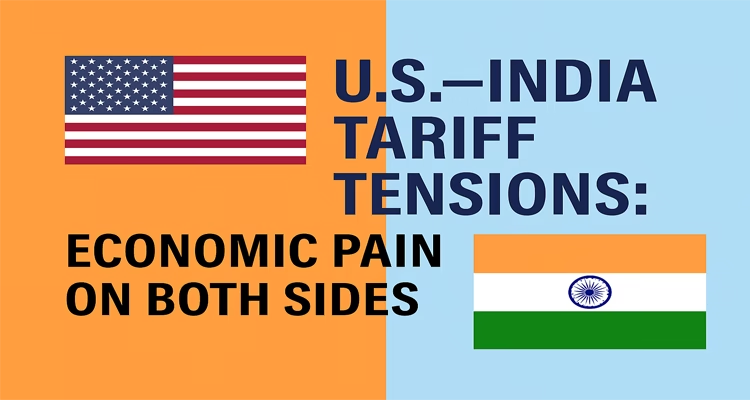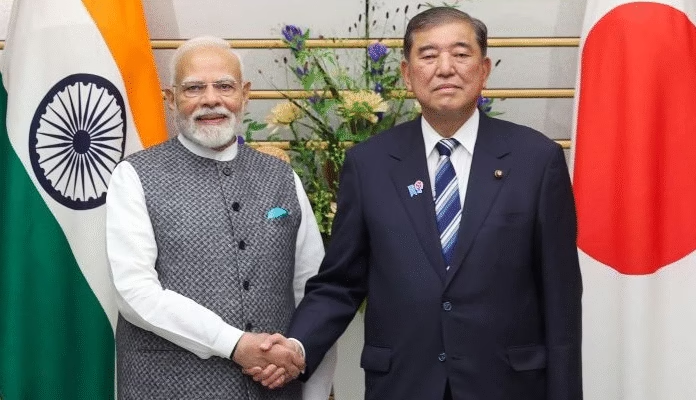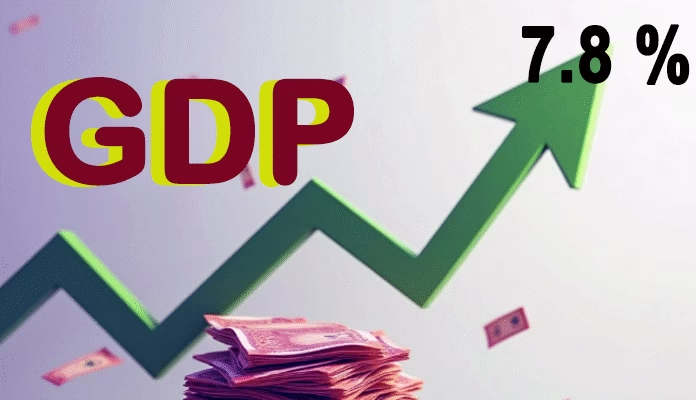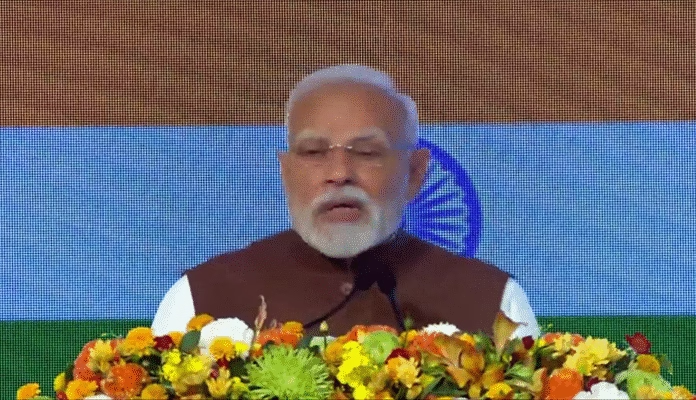
 by Ashis Sinha
by Ashis Sinha
U.S. President Donald Trump’s imposition of a sweeping 25% tariff on Indian imports, effective August 1, has triggered a wave of concern among economists, businesses, and diplomats on both sides. Intended as a pressure tactic on trade and strategic alignments, the move is now being criticized for potentially causing more harm than good — especially to American industries and consumers.
Impact on the United States: More Than Just a Trade Penalty
Rising Healthcare Costs
India is the largest supplier of generic medicines to the U.S., offering affordable alternatives to expensive branded drugs.
-
Key drugs affected: Treatments for diabetes, hypertension, cancer, and other chronic illnesses.
-
Consequences:
-
Higher drug prices for patients and insurers.
-
Strain on hospital procurement budgets.
-
Disruption of pharmaceutical supply chains.
-
Result: The cost of healthcare in the U.S. is likely to rise, disproportionately affecting low-income and elderly patients.
Pressure on the Retail and Apparel Sector
Indian textiles, especially cotton garments and fabrics, are a backbone for U.S. retailers.
-
Key buyers: Mid-sized fashion brands and discount chains.
-
Consequences:
-
Costlier imports may shrink profit margins.
-
Price hikes expected in Fall-Winter apparel.
-
Retailers may delay or cancel shipments.
-
Result: Consumers could face noticeably higher prices for everyday clothing and household linens.
Shock to Electronics and Auto Supply Chains
India supplies electronic components, circuit boards, and auto parts critical to U.S. manufacturing.
-
Affected industries: Electronics assembly, EV parts, industrial tools.
-
Consequences:
-
Higher input costs for U.S. manufacturers.
-
Disruption in “China-plus-one” diversification strategy.
-
Delay in production cycles, especially for SMEs.
-
Result: The tariff may slow down domestic manufacturing and increase U.S. dependence on other foreign suppliers.
Fewer Consumer Choices, Higher Prices
Products like basmati rice, leather goods, handicrafts, and jewelry from India are popular in U.S. homes.
-
Consequences:
-
Specialty goods may become unaffordable.
-
Reduced availability of Indian cultural products.
-
Amazon, Etsy, and big-box stores may pull back Indian inventory.
-
Result: A loss in product diversity for U.S. consumers, especially those from diaspora communities.
Strategic and Diplomatic Fallout
India is a key ally in the Indo-Pacific region. The tariff sends conflicting signals amid U.S. efforts to contain China.
-
Consequences:
-
Strained bilateral trade and defense talks.
-
U.S. firms may hesitate to expand operations in India.
-
Undermines long-term trust in stable U.S.–India economic relations.
-
Risk of Retaliation from India
India may respond with counter-tariffs or regulatory hurdles, targeting:
-
U.S. exports: Almonds, apples, aircraft, and tech services.
-
Strategic sectors: Defense equipment, agriculture, digital services.
Result: U.S. firms could lose access to one of the world’s fastest-growing markets.
Impact on India: Exporters Brace for Setback, But Eye Recovery Through Diplomacy
Loss of Competitiveness in U.S. Market
With a 25% duty, Indian goods lose their price advantage over rivals like Vietnam, Bangladesh, and Mexico.
-
Key sectors impacted:
-
Pharmaceuticals
-
Textiles & garments
-
Jewelry
-
Electronics and engineering goods
-
Result: Orders are being delayed or cancelled as U.S. buyers explore cheaper alternatives.
Sharp Decline in Export Orders
Exporters, especially in labor-intensive sectors, report a sudden drop in new bookings.
-
Industries hit hardest: Apparel, electronics, leather goods.
-
Fallout:
-
Lower factory output.
-
Job losses in export hubs like Tirupur, Surat, and Noida.
-
Working capital pressure for MSMEs.
-
IT and Software Services Unaffected – For Now
India’s IT exports, largely delivered digitally, are not impacted by physical tariffs.
-
Positive trend: U.S. firms continue to outsource IT, software, and backend services.
-
Caution: Any escalation in trade war rhetoric may eventually affect the digital economy too.
Indirect Pressure from China’s Trade Moves
China, also under U.S. tariffs, is diverting exports to Europe and Asia at discount rates.
-
Consequence: Indian exporters face stiffer price competition in global markets.
-
Sectors at risk: Electronics, textiles, machinery.
Petroleum and Organic Chemical Exports at Risk
India’s role as a refining hub means petroleum products and organic chemicals may become less viable due to higher costs.
-
Example: Jet fuel and diesel shipments to U.S. could slow down.
-
Result: Refinery margins may shrink and trade volumes dip.
What the U.S. Imports Most from India (2024 Value in USD)
| Category | Value |
|---|---|
| Electronics & Equipment | $14.40B |
| Pharmaceuticals | $12.73B |
| Gems & Jewelry | $11.88B |
| Machinery & Boilers | $7.10B |
| Organic Chemicals | $3.63B |
| Petroleum Products | $3.23B |
| Apparel & Textiles | $3.10B |
| Steel Articles | $2.83B |
| Auto Parts | $2.80B |
| Handicrafts, Leather, Decor | $2.52B |
Silver Lining: August Trade Talks Could Defuse the Crisis
Diplomatic hope remains. A high-level U.S. delegation is scheduled to meet Indian counterparts in New Delhi on August 25 for the sixth round of talks under the India–U.S. Bilateral Trade Agreement (BTA).
-
Goal: Possible rollback or relaxation of tariffs.
-
Negotiating card: The tariff may be a pressure tool, not a permanent stance.
-
Outcome: If successful, it could restore business confidence and resume trade momentum.
Conclusion: A Double-Edged Sword
The 25% tariff marks a new and unpredictable phase in India–U.S. trade relations. While it was meant to pressure New Delhi, the real fallout may unfold across American hospitals, shopping malls, and assembly lines — just as much as on Indian exporters and workers.
With global supply chains already in flux, the next few weeks could determine whether this tariff war escalates — or whether diplomacy brings it to a close.



